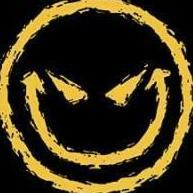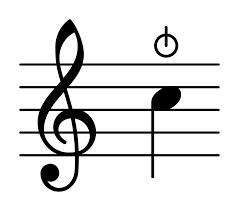Leaderboard
Popular Content
Showing content with the highest reputation on 09/20/2025 in all areas
-
Hello dear fellow composers. This poem (1886) is part of Laforgue’s Imitation of Our Lady the Moon. Here the Moon is no longer a muse or confidante, but becomes the star of farewell and forgetting, sealing human hopes in silence and nothingness. I truly believe that this cycle reflects a part of Laforgue’s own biography — that of a young poet caught in an impossible, broken love story, one almost erased from history, save perhaps for the initial of a name glimpsed in his correspondence. At least, that is the conviction I had while reading these poems. And so here is the end of my cycle: a piece deliberately sparse, rarefied, silent. It is also, perhaps, a farewell to Laforgue — for now. Time has come for me to explore new paths (and I have been kindly reminded more than once that I am probably composing with a delay of about 120 years…). I can only hope that these pieces may nevertheless have found some resonance with you. This is one of my most sincere works, born from a curious overlapping of states of mind with Laforgue. And I believe — to confess under the cover of anonymity — that one is never truly safe from falling secretly in love, even at my age. Perhaps this is what makes the kinship so troubling.2 points
-
Hey @UncleRed99! Glad to see/hear that you've finally moved on to a new piece! I think the proper name for a string quintet + piano combination would be "Piano Sextet". Traditionally for example, a duet of Violin and Cello with Piano is called a "Piano Trio", a trio of Violin, Viola and Cello with Piano would be a "Piano Quartet" and a quartet of 2 Violins, Viola, Cello with Piano would be a "Piano Quintet". So I'm just extrapolating that this would be a "Piano Sextet" based on those naming conventions. I'll address a few things that bothered me about the score before actually talking about the music: There's a few things to note here. First, when writing pizzicato strings, you don't need to add a staccato marking for the pizzicato. It's redundant considering that pizzicato is already a very percussive and separated effect. Also, you have the Bartok pizzicato at mf, followed by a regular pizzicato at forte. That doesn't really make sense considering that Bartok pizzicato is achieved by snapping the string as hard as possible so that it hits the fingerboard. The Bartok pizzicato would naturally have to be louder than the regular pizzicato just by the nature of the effect. Also, there's a special symbol for Bartok pizzicato that string players recognize: I think it would be more concise to use this symbol. Here you have the indication to play legato contradicted by the separated 8th notes. If you want the player to cancel their pizzicato playing and return to bowing you can put "arco" or "ord.". Now about the music. The first thing I noticed is that this is a very quiet piece. I had to listen to it on my Bluetooth speaker to really hear it better. But I think the problem is also that when the piano is playing the melody alone without the support of the strings, the piano melody is often simply inaudible above the accompaniment. Especially the grace notes are lost because they go by so quickly. The way to counteract that is to of course use MS Basic soundfonts for the piano so you can bring out the melody in high relief by using higher velocity values for those notes (which you can edit in the "properties" tab). Unfortunately, the Musesounds samples don't currently respond to velocity changes so you'd be forced to use the MS Basic soundfont for piano. But imo (since I do this all the time) I think the clarity of the melodic line is to me a much more sought after commodity in music than the supposedly "better" sounding Musesound sample. But that might be just me. Overall, I like the melancholy vibe of the piece! The only thing that bothers me is that the key changes seem to be inserted into the piece just for their own sake. And the modulations should be led by the melody for them to make audible sense and create a more breathtaking effect. Thanks for sharing!2 points
-
Quartet In A Major For Guitar And Strings-1 Free Sheet Music by Robert C. Fox for Various Instruments | Noteflight Quartet In A Major For Guitar And Strings-2 Free Sheet Music by Robert C. Fox for Various Instruments | Noteflight Quartet In A Major For Guitar And Strings-3 Free Sheet Music by Robert C. Fox for Various Instruments | Noteflight Quartet In A Major For Guitar And Strings-4 Free Sheet Music by Robert C. Fox for Various Instruments | Noteflight1 point
-
Here's a new score (Finally). Written for String Quintet x Piano Piano Sextet. (😉) Wrote it as a representation of how tense things are in the world nowadays. The mystery of not really knowing where things will go, from here. The rhythm / pulse throughout the piece signifies the ever-long march of time, that no one can run away from. Time that we all are limited in. The key change to A minor at the return to the motif signifies a slight feeling of hope among the tension, I feel, currently, in that I hope that things will become more bearable as time moves forward. Hope y'all enjoy this one. (I may or may not make updates to it, periodically, for the next couple weeks. Y'all know how I be at this point... lolol but I feel this one is as done as I can make it, at this moment.) The Calamity.pdf Updates: Corrected markings for bartok/pizz sections as suggested, using proper articulation marks Added hidden piano staff playing only upper staff for better clarity of the piano's melodic lines Changed sound of the violin to solo violin 2 (muse), out of preference for the more stable tone corrected dynamic markings where it was brought to my attention that they needed to be corrected due to context Removed Staccato markings in pizz. sections for Cello & Cb. Raised Master volume track due to mention of the MP3 playback being a tad too quiet to hear fully The Calamity.mp3 @PeterthePapercomPoser1 point
-
That’s an interesting method for sure, with modulation!! lol I also have a music theory workbook en route right now because I need to touch up on my education. I did drop out in 2018 so it’s been a minute. Most of my work just comes from whatever my ear decided it to be. Mostly just improvised and unplanned from the start which I know isn’t the *best* way to go about it. Definitely missing out on some cool musical techniques by doing it that way, I’m sure. i appreciate your perspective on it though! I will most likely experiment with this piece as I have done with my others and post periodic updates on what I’ve discovered in the process. Of course feedback is always a welcomed action. Or maybe I could provide insight just based on the results. Who knows! thanks Peter1 point
-
Thank you! I'm going to fix those unplayable chords, but this is like salon music; light!1 point
-
Hi! Actually I just completed roughly half of my piano toccata piece inspired from living near the motor city (Detroit, MI) in my childhood... I decided to make this toccata piece since I thought the mechanistic characteristics of the genre match well with general images of the motor city... After writing nearly the half of the piece I spent many days but still have no idea how to develop further the middle climax section... Could you comment on this piece and give any suggestions how to complete this middle section? I'd really appreciate your help!1 point
-
I mean, to me you have enough material to work with already. Are you trying to get out of it to go back to the first theme? It sounds like it's headed there to me. Maybe try and think about getting back to the octave textures. One way would be weaving them in in some creative way to what you have at the end. I would keep the drive going too. This piece is really cool, btw! It had my attention immediately, and the driving nature of it is really fun and engaging. Although not similar at all, the style of this reminds me of something I wrote. Take a listen sometime; something I did with repeated textures or whatever might give you an idea. Keep us updated, sounds great so far 🙂1 point
-
This is the first I've ever heard of this practice, but by all means, your education is probably more recent than mine! LoL Are you referring to the Eb Neapolitan chord in meas. 33? I actually thought that chord brought the "more hopeful" feeling you were trying to target in the A minor section. The way I approach modulation is also a bit unorthodox. I don't usually target a specific key to modulate to - I just let the music modulate wherever it feels like it should. There was one time that I modulated to a completely random key by rolling a 12-sided musician's die. LoL I thought it actually worked out quite well. I don't think your modulation is that un-smooth in this case - after all, A minor and D minor are closely related keys, being right next to each other on the circle of fifths, it shouldn't be difficult to get to one from the other. But I think, perhaps the harmonic rhythm and the timing of the modulation was a bit too predictable? That's my hunch. But don't feel compelled to change it just based on my hunch - if you want to experiment with it, perhaps doubling the harmonic rhythm of the chords of the modulation would inject some excitement into it? Those are my thoughts.1 point
-
I love the work you do with the subtitles, thanks for making your music more accessible to us non-French speakers. The music is hauntingly beautiful, you're a wonderful craftsman and performer. I usually just listen to your music for enjoyment rather than critique, and even though I don't always comment, I'm always a listener. Thanks for sharing this!1 point
-
Hey there! Those were just some things that stood out to me, I'm just some rando on the internet haha. The beauty of being the composer is you get the choice of taking other's thoughts how you please, it's ultimately your music 🙂 Cheers buddy1 point
-
As others have said, when I compose, I think and feel mostly about the technical aspects of music. Also, I rarely experience the "correct" feelings when listening to other people's music. I might get happy and feeling relaxed when I hear music that was supposed to be sad for example (like minor is not sad for me, but I understand the idea), and anxious and maybe irritated when I hear music that is supposed to be glorious and happy, and annoyed when a theme is repeated too much - or similar. So I can't really write music to fit a certain mood, I just write what I like at the moment. Maybe when it's finished I can sort of relate it to a certain feeling. Also, I sort of think that your inner, unconscious feelings come out in the music, even if you don't think about it. I recently tried composing from a written template - like a small "poem" about someone going on a journey, and it actually sort of worked as a blueprint. But still, as soon as I get into the various parts, I just think of music theory and how to get from A to B, how to make a contrast, or should I use horn or flutes now or similar.1 point
-
I wish to have more free time to help me develop more ideas. My time is very limited unfortunately. I would love to dedicate time to write another piano sonata . Maybe slowly slowly so I have to adapt to this regardless of the limited time1 point
-
1 point
-
Thank you so much for your words and your attention my dear friend. Really appreciated it 🙏🙏🙏🙏🙏1 point
-
Thanks, as per usual, for your detailed feedback! In regards to the pizz. Staccatos, I was under the impression that it was acceptable to use for Cb. And Cll. Parts, but not for Viola & Violins? At least, that’s what I was taught in my year of college when doing extra curricular arrangements with the theory professor. But yall tend to be much more wise than I at this stuff 😅 I was never really strings-oriented and am mostly self taught so I’ll take that into account for sure. I was also unaware that there was a specific marking for Bartok! the “mf” for the bartok section was mostly for the playback. In hindsight I should’ve made that marking invisible to correct for its implausible use, IRL. I agree, the piano also should stick out a bit more. The sound used for the piano and for the viola come from the Spitfire LABS VST3 plugin. I can optimize it to be a bit louder in the left hand, using a hidden staff, similar as to how I achieved that in the original playback for “Remembrance”. and as far as the key change goes, I thought the use of the Neapolitan chord modulation provided a pleasantly unexpected movement in that section during the mod. To A minor. What would you suggest in that section to maybe smooth it out a bit more? I’ll admit I had trouble figuring out where to take it and how to move it more seamlessly to A minor. 😅 I’m not a modulation Guru, but have been lucky in some instances where while writing, the modulation ended up just working on its own without much effort based on what I wrote prior to it. My process is a bit unorthodox in honesty, since I’m fairly un-trained with composing, mostly working off of my own ear. thanks Peter!1 point
-
No need to answer in German... as I already told you I am French, whether you like it or not If you don't understand the lyrics, activate the subtitles provided on YouTube. You will have the pleasure of discovering a magnificent poetry that undoubtedly retains some of its power in English. But if you want to talk about music in a constructive way it's ok. Otherwise this discussion does not need to be1 point
-
I was listening to your work on my phone, when I started texting people, at some point I stopped what I was doing so I could listen to the music. This is rare for me. I think there is some gorgeous music. I personally like the move from 1-3 being calm. But I felt like after that beautiful calmness of 3, you have set-up some anger, or vivace well. The longing of the soprano in the upper range and emotional ending to 3 was great. This tension exists in the first measure of 5, but disappears, I wanted a movement of it. This music made me realize I need to do better lol. Beautiful stuff 5 makes me want to start running on the beach. Idk how else to say it. Also the soprano part sounds a little high. Idk what the range is, but even for a soprano, singing above the staff for a prolonged period of time (a minute straight or more) is quite difficult. High Bs and higher are terrifying for anyone, especially with the orchestra forte underneath, because the soprano can’t cheat or anything. So try to use this range more sparingly if you think you can. Although quite sylistically different from you, one the best composers to look at for easy vocal writing that still uses the full range of the soprano voice would be Donizetti. Take a look at the way he sets up singers for important high notes, I’ll try to find an example when I get home.1 point
-
FWIW, here is one of my own comments I just found and remembered from another piece of mine: Sin boldly is the ancient maxim. If you are going to break that "classical" rule of no parallel fifths, do it deliberately, and do not write them in pure counterpoint! I don't mind first position Rock or Folk chords in the guitar when it is merely accompanying, replete with parallel fifths on the bottom; people are used to that sonority, but when I write a fugue or real counterpoint, of course I avoid them. HOW does your music SOUND?1 point
-
By the way, here is an example of what classical guitar can be, if one wishes to be so complicated! Villa-Lobos was quite the virtuoso on the thing...I have no desire to be so complicated!1 point
-
Thatguy, some things I won't take your advice on: of course I will correct impossible chords, but fingerings and hand positions essential? Not standard in historical classical guitar music. The dropping of the pedal A because I wanted to; just contrapuntal reasons. I'll see when I feel like editing, which is not now! 😆1 point
-
1. A minor. Again, just like the string quartet one, this one is very Mozart. I find a great use of grace notes (acciaturas) here. In the opening, you have the two hands play parallel, just like in Chopin's Scherzo No.3 . I see that after that, you had an immediate F Major Part. And then my favourite part is the syncopation with grace notes part. I think that this contains a lot of great ideas. 2. A major. The transition makes a lot of sense. e, f sharp, e part at the start is great, and very Mozart-like. The double-thirds runs seem fun to play! The left hand parts are very good. I think it is wrong at bar 44 to be in minor key, as that you haven't notated a natural sign. Overall, very good use of the second voice. 3. F major. Really waltzy. Bar 50 has a sharped C, which is a very smart choice. D minor is also a brilliant transition. I like the way it is intense from bar 56, and how it is in A minor, and transitions back to F major at bar 60. It feels magical in a way. Very great. 4. C# Major. Nice Introduction here. A major is something I like personally. The transitions are incredibly nice. It is smart to go back to the original key. Nice piece. 5. G Minor. Sorry for being offline for some time. Anyways, very jazzy opening and ending, with nice transitions to different keys, as always very elegant. I like the tension in the end. Nice use of dissonance. 6. G Minor. March-like Finale! Very cool. I like how you used Bb Minor stuff too! Anyways, I also like the staccatissimo texture! Overrall, 9 out of 10. Be happy! This is great, and you have a lot of potential. To improve, maybe write longer music and develop ideas. Keep composing! -TristantheTristan1 point
-
Cool! I'll make the corrections eventually. This thing was written pretty fast, and I actually like the folk-like first position chords! I do less of that in the Symphony-Concerto because I really took my time writing that back in 1997-1998, four months or so. Had a manual of all possible chord inversions until my sister's crazy boyfriend borrowed it and didn't give it back! When I write lighter guitar music, I do those first position chords when the guitar is in a merely accompanying role.1 point
-
I will be lazy on this forum, because I think the mods want it to be some kind of academic thesis! Archived! I am 56, with two theory and composition degrees! Too academic and pedantic for me to comment too much! Try this... Three Roads Free Sheet Music by Robert C. Fox for Various Instruments | Noteflight0 points


.thumb.png.8b5b433a341551e913a34392660bc95b.png)





